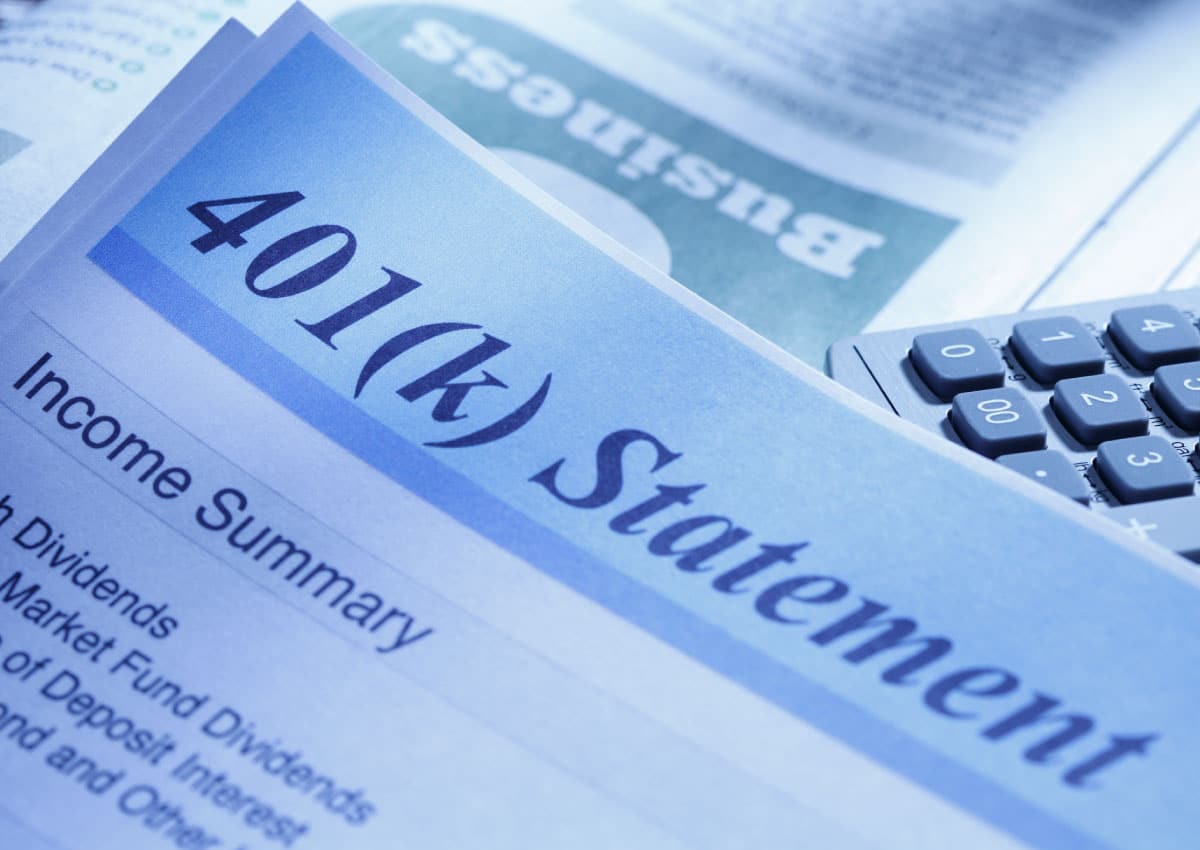

Saving For Retirement
Saving for retirement can be daunting, especially early on. Dive into our resources to better understand your options and take full advantage of your best retirement saving asset – time.
Starting Out
Saving for retirement now when retirement seems light-years away can be challenging. You may think to yourself:
- “I’ll start saving when I make more money.”
- “I don’t even know where to begin.”
- “I have money in my savings account; that’s fine for now.”
- “I can barely pay my bills; how can I set money aside for retirement?”
With pensions dwindling and Social Security benefits replacing only a fraction of income, saving for retirement falls largely on you. The more you’re able to save, the more freedom you’ll have in retirement.
Time
While you may have to work your way up to contributing the amount you’d like, it’s always best to start sooner rather than later. That’s because time is one of the greatest assets there is when it comes to building wealth.
If you’re just starting out and have 30-40 years to save, that’s the amount of time you’ll have for your money to grow and compound. Compounding describes the process by which the money you invest earns money and is reinvested to earn even more money. The more time you have, the greater your earning potential.
Example:
Greg
Greg starts saving for retirement at age 18. He puts $2,000 into an account earning 7% APY* until he turns 28.
Over the course of ten years, he saved $20,000. Thanks to compound interest, Greg will have $386,718 when he retires at age 65.
Marcia
Marcia starts saving for retirement at age 31. She also puts $2,000 into an account earning 7% APY.* She continues to save until retirement at age 65.
Over the course of 35 years, she saved $70,000. Marcia will have $295,827 when she retires at age 65.
In this example, Greg saves less ($20,000 vs. $70,000) than Marcia and saves for less time (10 years vs. 35 years), but ends up with a larger balance — over $90,000 more. That’s compound interest at work. The more time you have, the more compounding can help exponentially boost your savings.
The more time you have, the more compounding can help exponentially boost your savings.
Savings Goal Calculator
Use this free calculator to see how saving, compounding, and time can work for you.
Tips For New Savers
Just Start Somewhere
Maybe you can only afford to save $20 per month right now. That’s fine. Start there and make an effort to cut expenses or earn additional income to increase contributions.
Another option is to set a monthly retirement savings goal and build your budget around it. For example, if you want to save $200 a month, subtract that from your income before allocating funds for spending and other goals.

Take Advantage Of Employer-Sponsored Retirement Benefits
There are many benefits to workplace retirement plans, including payroll deductions, tax benefits, and in some cases, an employer match.
If your employer offers the latter, they’ll match your contributions up to a certain percent – either entirely or partially. If they match your contributions up to 5%, for example, that’s an easy way to boost your savings.

Don’t Let Risk Scare You
When it comes to investing, it’s best to be comfortable with some risk.
While putting money in a savings account pays dividends and keeps your money safe, it’s not enough to keep up with inflation, let alone maximize your investment potential.
You don’t necessarily have to choose high-risk investments; you’re simply encouraged to look at the options to determine which accounts within your risk tolerance can earn more for you.

Speak To An Expert
You might think talking with an investment advisor is only for the wealthy, but that’s far from true. Anyone can benefit from talking about retirement or general investment strategies.
As a benefit of membership with A+FCU, you can take advantage of a free consultation with an A+ Wealth Management Financial Advisor.
To prepare, aim to write down ideas and/or questions to maximize your time.
Save More
Once you’ve started saving, make it a goal to increase contributions regularly. By periodically evaluating your budget, you may be able to find ways bump your savings.
Other opportunities to increase contributions include an annual raise, promotion, career change, or the like. The more you save, the better positioned you’ll be for retirement.


Financial Coaching
Could you use some help with developing your budget? Our partner in financial education, BALANCE, offers free, confidential one-on-one coaching.
Tools For Retirement
When you’re beginning to save for retirement, navigating types of accounts and terminology can be confusing.
401(k)
This employer-sponsored account offers tax advantages and is designed to help you save for retirement. If available, your employer will provide details on when you become eligible to open and contribute to a 401(k). According to the IRS, an employee generally becomes eligible when they’re 21 and have at least one year of service.
Types Of 401(k)s
There are two main types of 401(k)s – Traditional and Roth. The primary difference between them is how and when funds are taxed.
Traditional 401(k)
Contributions to a Traditional 401(k) are made on a pre-tax basis, meaning you won’t pay taxes on funds the year the money is earned. Instead, both contributions and earnings will be taxed as ordinary income upon withdrawal at retirement.
If you withdraw funds before age 59 ½, there’s a 10% penalty unless you qualify for an early withdrawal exemption. At age 72, you’ll be required to start taking Required Minimum Distributions.
Roth 401(k)
Contributions to a Roth 401(k) are made on an after-tax basis, so taxes are paid the same year. Contributions and earnings grow and come out tax- and penalty-free at retirement if you’ve held the account for five taxable years and are either age 59 ½ or are disabled.
Your contributions can be withdrawn anytime without penalty. If you withdraw earnings before age 59 ½, however, you’ll generally pay a 10% penalty — unless you qualify for an early withdrawal exemption.
Qualifying
To qualify to contribute to a 401(k), you must work for a company that offers a 401(k) plan to employees. If you’re not 21 or haven’t worked with your employer for a full year, check with your employer to see when you’ll be eligible.

Contributions
If you’re able and choose to participate, you’ll be asked to designate how much money to withhold from your paycheck for retirement contributions. This is typically a percentage of your income. Don’t forget to look into whether your employer has a match program. If they do, it’s recommended you contribute at least enough to get the full match.
For example, if your company has a dollar-for-dollar match of up to 6%, it’s recommend you contribute at least 6% of your paycheck to receive the maximum benefit.
It’s important to note that there are annual limits to how much you can contribute – and the number will depend on your age. The IRS sets those limits, and the most up-to-date information can be found by clicking the button.
Investment Options
Contributions to a 401(k) are typically invested in select funds offered by the employer and the 401(k) administrator. From those pre-selected options, you decide how you want to invest. Employers may offer target-date funds, risk-based portfolios, or a combination of both.
Target-Date Funds
The investment mix in these funds is based on your target retirement date.
As you near retirement, the investment allocation goes from aggressive to conservative, meaning you’ll move to less risky investments the closer you get to your projected retirement.
Risk-Based Funds
The investment mix in these funds is based on risk tolerance.
You’ll normally see the following: conservative, moderately conservative, moderately aggressive, aggressive, and very aggressive. Details on investments and returns are available to help with decisions.

Review Your Choices
Review the investment choices and pick the one(s) with which you feel most comfortable. And remember, you can make changes later.
Key Recommendations
- If your employer offers any type of contribution match, contribute at least enough to get the full match.
- Choose investments that reflect your time horizon and risk tolerance. Generally, the longer you have until retirement, the more risk your portfolio can assume.
- Avoid taking money from your 401(k) prior to retirement to avoid applicable penalties, fees, and taxes.
- If you change jobs, consider the pros and cons of rolling funds over to a new 401(k), Individual Retirement Account (IRA), or other retirement account.
403(b)
A 403(b) is almost identical in structure, contribution limits, rules, and restrictions as a 401(k). The main difference is 403(b)s are only offered by eligible employers – that typically includes nonprofits and school districts.
IRAs
Individual Retirement Accounts (IRAs) are another option for retirement savings. Employers don’t sponsor these, so you have more freedom to choose where you open an account and how your money is invested. The type of IRA you’re eligible for will depend on your financial situation, including your Modified Adjusted Gross Income (MAGI).
Types Of IRAs
Overview:
- Tax-deferred retirement account
- Contributions go in pre-tax and earnings grow tax-deferred
- Taxes are paid at withdrawal
- Deduct contributions from your taxes if eligible – see table below for income requirements
Qualifying:
- You (or spouse) earn taxable income of at least the amount of total contributions
Contribution Limits:
- Visit the IRS website for the most up-to-date contribution limits
Taxes:
- Contributions may be tax deductible depending on income levels and whether you have a workplace retirement account
Withdrawals:
- Can take money out, but will pay income taxes and a 10% penalty if under age 59 ½
- Can avoid a 10% penalty for qualified exemptions as defined by the IRS
- Must start taking money out at age 72
Overview:
- Money goes in after taxes
- Earnings grow tax-free
- Do not pay taxes when money is withdrawn in retirement
Qualifying:
- Earn taxable income according to IRS contribution requirements
Contribution Limits:
- Visit the IRS website for the most up-to-date contribution limits
Taxes:
- Withdraw your contributions at any time without penalty
- Before age 59 ½, can withdraw earnings without penalty for qualifying exemptions as defined by the IRS
Withdrawals:
- No required withdrawals at any age
- Designed for self-employed individuals or business owners
- Investments, distributions, and rollovers work similar to a Traditional IRA
- Contributions can be tax deductible for self-employment or business taxes
- Employees can’t make contributions
- Taxes are paid when money is withdrawn in retirement
Visit the IRS website for more information including qualifying, limits, taxes, and withdrawals for SEP IRAs.
- Designed for self-employed individuals or small business owners
- Investments, distributions, and rollovers work similar to a Traditional IRA
- Contributions can be tax deductible for self-employment or business taxes
- Taxes are paid when money is withdrawn in retirement
- Employees can make contributions
- Employers are required to make contributions for plan participants and nonparticipants
Visit the IRS website for more information including qualifying, limits, taxes, and withdrawals for SIMPLE IRAs.
IRA Investments
One of the main advantages of IRAs is the ability to control how your money is invested. You can keep it simple by putting it into a fixed- or variable-rate investment – like a certificate or savings account – or you can choose to invest the funds in mutual funds, stocks, or bonds. The types of investments available will depend on where you open the IRA.

Key Recommendations
- If applicable, contribute enough to your 401(k) to get a full employer match.
- Your individual circumstances will determine whether a Traditional or Roth IRA benefits you most. There are advantages to both, and you can contribute to both. We recommend discussing with an investment advisor.
- If you choose to invest in both a Traditional and Roth IRA, make sure you avoid exceeding the max contribution limits for the year as defined by the IRS.
- Choose investments that reflect your time horizon and risk tolerance. Generally, the longer you have until retirement, the more risk your portfolio can assume.
- Avoid taking money from your IRAs prior to retirement to avoid penalties, fees, and taxes.
Retirement Calculators
Are you ready to retire? How long will your savings last? Which IRA is best? Answer these questions with our calculators.
Investment Options
Once you establish a retirement account, you need to decide how you want to invest your money. There are a variety of options – each with their own risks and rewards. How you choose to invest will depend heavily on your time frame and risk tolerance.
Long Run
When you start your savings journey, keep in mind retirement is an investment for a longer period. This means that while there might be day-to-day fluctuations in investment values, you’re keeping your sights on the long run – often decades away.

Risk vs. Reward
When investing, there’s always some element of risk involved. However, in general, the riskier the investment, the higher the potential return and vice versa. Your comfort level for assuming risk is your risk tolerance level.
Risk tolerance is different for every individual — some people can take more risk while others can’t. While this can depend in part to your personality, it should also depend on your time frame.
In general, your investments should be less risky as you near retirement. Less risk means less volatility (fluctuation) which also means a lower likelihood of the value of your investments dropping suddenly.

Diversification
You can think of this as “not putting all your eggs in one basket”.
When investing your money, you want to ensure you have a variety of investments to reduce risk. If one particular company or fund performs poorly, you have other assets to help offset the loss.
You can spread risk across account types, industries, and other categories.
Income Investments
Income investments are designed to generate income. They tend to be lower risk than growth investments, but have their place in any retirement plan.
Bonds
Bonds include saving, government, corporate, and municipal bonds. With a bond, you’re essentially lending money to the government, a corporation, or a city/state. In return, they’re going to repay you with interest.
In general, bonds tend to be a lower-risk investment, but it depends on the type of bond and where it’s invested. For example, buying a bond from a corporation is generally more risky than buying one from the Federal Government.
Savings Accounts
A savings account is a very safe place to put money but generally pays little interest. However, it does provide quick and easy access to cash, if needed.
When picking a savings account, ensure the financial institution is federally insured in case of loss. The National Credit Union Administration (NCUA) insures credit unions, and the Federal Deposit Insurance Corporation (FDIC) insures banks.
Explore Savings AccountsShare Certificates
Share certificates are similar to savings accounts in that they’re very safe, but because of their structure, they typically pay a higher interest rate. With a certificate, you commit to keeping funds in the account for a set period. While you may be able to make a withdrawal, there’s almost certainly a fee.
As with savings accounts, it’s best to work with a financial institution that’s federally insured in case of loss.
Explore Share CertificatesGrowth Investments
When you invest in growth investments, such as stocks or mutual funds, you’re purchasing them in hopes that their value goes up over time. Over longer periods, growth investments tend to earn higher returns than income investments. However, they’re also generally associated with higher levels of risk.

Stocks
Stocks are one of the most common types of growth investments. When you purchase a share of stock, you become part owner of a company. The more shares you have, the more influence you have over the company.
With stocks, you can make money one of two ways: dividend income or capital gains.
Dividends are typically paid by more established companies, and the amount you receive depends on the number of shares you own. For example, if you own 10 shares of ABC Co. and they pay a $0.50 dividend, you’ll earn $5.
Capital gains are realized when you sell a share for more than what you paid. For example, you bought 10 shares of ABC Co. for $10 each a year ago and now, each share is worth $50. If you decide to sell all your shares, you’ll have a capital gain of $40 per share or $400 total.
Stocks offer the highest potential return, but they have higher risk. If the company goes bankrupt or is perceived to be struggling, you could see your stock values drop sharply. There’s no guaranteed return and stock prices fluctuate for a variety of reasons.
If you decide to invest in stocks, make sure you research the company. Look at their historical stock data — how much has the price fluctuated over the past year? The past five years? What are investors and experts saying about the company? Make sure you know what you’re investing in and be prepared for fluctuations and price changes.

Mutual Funds
Mutual funds are a collection of stocks, bonds, and other securities.
Rather than buying individual shares of a company or investment, your money goes toward buying a share of the mutual fund that consists of the collection of investments. A fund manager makes decisions on how much of each investment to buy and sell, so you don’t have to worry about day-to-day management.
Mutual funds are a great way to invest as they’re typically more affordable than buying individual shares of the various investments within them.
There’s a wide variety of mutual funds; they also tend to be less risky because they’re more diversified.
*APY=Annual Percentage Yield.
Not intended to provide investment advice. Investments involve risk and may lose value. Speak to a financial advisor for more information and recommendations.
Retirement Resources
Take advantage of these resources whether you’re starting to save for retirement, are getting ready to retire, or are somewhere in between.

Related Articles
The Latest On Social Security Benefit Increases

In 2023, millions will see an increase in Social Security benefits thanks to a cost-of-living adjustment meant to offset inflation. Here’s the latest.
Creating A Retirement Budget That Works

Start planning now for how you want to spend your time during retirement and use these tips to help create a retirement budget.
4 Helpful Retirement Tips You Need To Know Now

Retirement might seem like a far off dream of yours, but it’s never too early to create your financial plan. Get started with these helpful tips.


A+ Wealth Management
Put your money to work with the right tools. Create a custom investment strategy with an A+ Wealth Management Financial Advisor.
